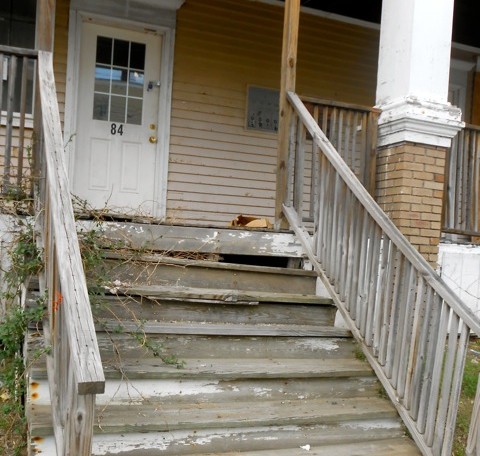Where there are old houses, there is lead paint. And where there is lead paint, there are kids being exposed to lead who need help.
But in order for the kids to be helped, they first have to be found — and Maine does a poor job of trying to find them.
The U.S. Centers for Disease Control and Prevention recommends that 1- and 2-year-olds living in areas of old housing stock be tested for lead exposure.
Lead paint was banned in 1978, but it is still present in many old homes and apartments; nearly 30 percent of Maine housing was built before 1950. Chips and dust from lead paint — as well as runoff from lead plumbing fixers — can easily be ingested or inhaled.
Even low levels of lead exposure to a developing brain can cause developmental delays and damage to the muscular and nervous systems. Multiple studies show lead poisoning drops a person’s IQ level and future earnings.
And time is a factor — the severity of any problems increases along with the duration and intensity of the exposure to lead.
However, in Maine, which has the sixth-oldest housing stock in the nation, just 55 percent of 1-year-olds and 37 percent of 2-year-olds were tested in 2017, according to a recently released study from the Maine Affordable Housing Coalition.
Federal health officials say any state with more than 27 percent of its housing built before 1950 should mandate lead testing for all 1- and 2-year-olds. Maine is the only New England state, and one of two among the eight states with the oldest housing, not to mandate testing.
The results speak for themselves. In Vermont, which enacted universal testing in 2011, 95 percent of kids are tested by age 3, the housing study says. In Massachusetts, it’s around 70 to 75 percent. In Rhode Island, it’s 86 percent. Connecticut tests nearly all its children before age 3.
New Hampshire, which mandated testing last year, expects to see a significant increase in its percentage this year.
Maine should follow suit. The effects of lead poisoning can’t be reversed, but they can be stopped — once a child is diagnosed with elevated levels of lead, parents and landlords can have the hazards removed.
The state took a strong step in 2015 by lowering the threshold for lead poisoning from 15 to 5 micrograms per deciliter of blood. As a result, more kids’ families were notified of lead exposure, and the source of the exposure eliminated, before things got worse.
The Legislature’s Health and Human Services Committee on Tuesday held a public hearing on L.D. 1116, from Sen. Nate Libby, D-Lewiston, which would bring mandated lead testing for 1- and 2-year-olds to Maine. Lawmakers should pass it.
The state should also look to the success of Androscoggin County, particularly in Lewiston-Auburn, where a focus on lead testing and remediation in the area’s old buildings is reflected in a 15 percent increase in childhood testing from 2004 to 2014. They are doing something right — and it should be duplicated.
It will take more than a mandate — testing rates are low even for kids who are covered by MaineCare and thus already under a federal testing mandate.
But a mandate will make sure that more Maine kids are tested — and that more are saved from situations that are slowly poisoning them.
Send questions/comments to the editors.



Success. Please wait for the page to reload. If the page does not reload within 5 seconds, please refresh the page.
Enter your email and password to access comments.
Hi, to comment on stories you must . This profile is in addition to your subscription and website login.
Already have a commenting profile? .
Invalid username/password.
Please check your email to confirm and complete your registration.
Only subscribers are eligible to post comments. Please subscribe or login first for digital access. Here’s why.
Use the form below to reset your password. When you've submitted your account email, we will send an email with a reset code.